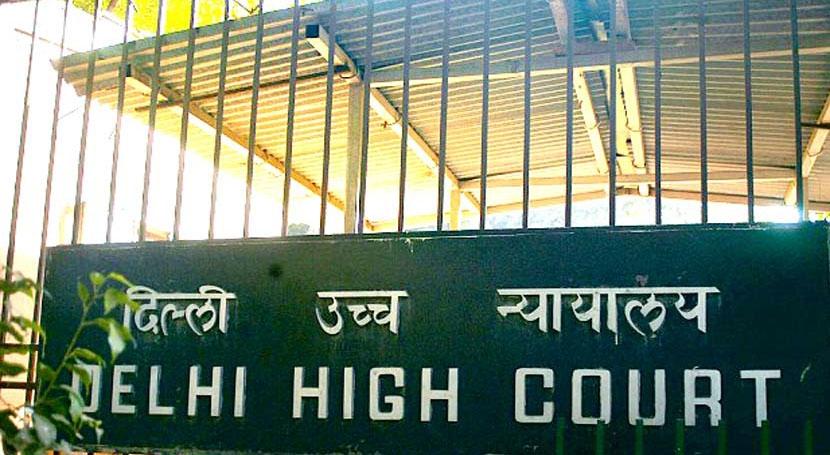
Delhi HC order red flags alarming rate of tree loss in national capital
New Delhi, Sep 17 (IANS) In recent times, the Delhi High Court has voiced concern about the reckless felling of trees on weak justifications. The court’s efforts to protect the city’s green lungs have met with resistance, raising questions about the true priorities of the authorities.
One crucial step taken by the court was to mandate that orders issued by Tree Officers under the Delhi Preservation of Trees Act, 1994, for tree felling should be ‘speaking orders.’ In other words, these orders should explicitly state the reasons behind permitting tree removal.
“This move aimed to ensure transparency and accountability in the decision-making process. However, compliance with this directive was far from satisfactory,” said climate activist and petitioner Bhavreen Kandhari.
A separate case prompted the court to direct Tree Officers to conduct on-site inspections before granting permission to fell trees. This seemingly logical step was essential to ensure that trees were not sacrificed needlessly. Nevertheless, this directive faced challenges in implementation.
“The crux of the problem lay in the fact that tree removal permits were being granted based on flimsy justifications such as ‘tree is in front of the driveway.’ The court recognized that this practice was resulting in the removal of trees for trivial reasons, jeopardising the city’s green cover,” Kandhari said.
One significant concern was trees obstructing the stilt parking of newly constructed houses. To address this, the court issued another directive, requiring the municipal bodies to mark all trees within the boundary of a plot and those on public land on sanctioned layout plans.
It also said that entry gates should be designed in a way that preserved trees outside them, and municipal bodies pledged compliance with these directives.
“Despite assurances and affidavits, the problem persisted. This led to a contempt case being filed, alleging that orders continued to lack the necessary detail. The Head of the Department and Tree Officers acknowledged their mistake and promised to rectify it. Still, little changed on the ground,” said Kandhari.
These events compelled the High Court to intervene decisively.
In a landmark order, Justice Jasmeet Singh on September 14 said that no permission shall be granted to anyone by the authorities here for felling of trees for “construction of houses”.
Kandhari has sought action against government officers who, despite a clear directive from the court in an April 2022 order, were allegedly not adhering to the requirement of providing reasons for tree felling.
The judge said that the interim order dated August 31 shall continue till October 6.
The interim order had recorded that the Delhi government will not grant permission for the felling of trees in the national capital until September 14.
Justice Singh granted the Delhi government two weeks to file a detailed response on the status of transplanted and replanted trees in Delhi, and also if the process was successful.
“… directions contained in the August 31 order shall continue. No permission shall be granted for felling of trees in respect of construction of houses,” the judge said.
Kandhari has expressed concern that the authorities were recklessly granting permission for the felling of trees, which prompted the early hearing of the contempt plea.
Advocate Dhairya Gupta, representing the Delhi government, had, on August 31 informed the court that no permission for felling of trees for any individual will be granted until the next date of hearing, and any required permissions for important projects would be intimated to the court.
“This move signifies a shift in focus, highlighting that the preservation of trees should be the foremost priority for authorities, aligning with the primary purpose of their existence,” Kandhari said.
So, the ongoing struggle to protect Delhi’s trees raises critical questions about the commitment of the authorities to preserve the city’s environment.
Verhaen Khanna, founder of the New Delhi Nature Society, said: “This is really great, the builders were ruining the green cover in the colonies by getting permission from the forest department so easily to remove healthy beautiful trees just because the architect’s plans did not accommodate the existing trees.”
“Some builders respect trees and plan accordingly by accommodating existing trees. The forest department should have been aware enough to refuse such permission, it’s basic logic, allowing felling in colonies has led to rise in air pollution and in turn health problems and mortality in Delhi residents,” he added.
Vallari Sheel, who is an urban ecologist, said that thousands of trees are being felled in Delhi every year, which is detrimental to the health and well being of its residents. Often trees are felled in residential areas because the current building by-laws allow edge-to-edge construction in most plots.
“We need to revisit these by-laws and modify them suitably to allow continued existence of trees in residential areas,” she said.
Kandhari said that the High Court’s persistent efforts to ensure ‘speaking orders’ and meaningful tree preservation should serve as a clarion call for all stakeholders to prioritise the green heritage of Delhi over short-term development interests. Only by working together can we strike a balance between urban growth and the conservation of our invaluable trees.
